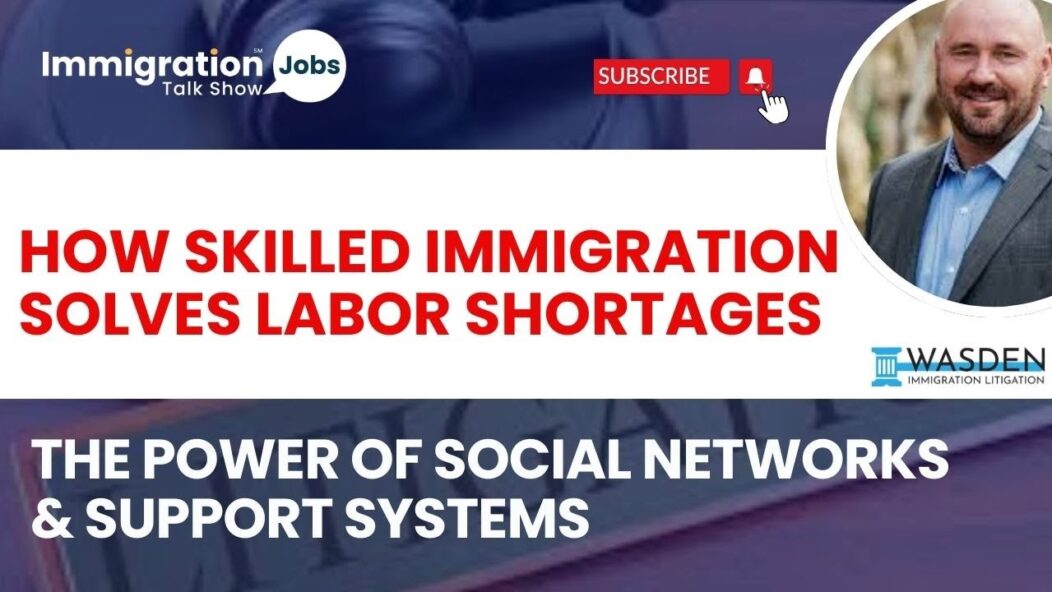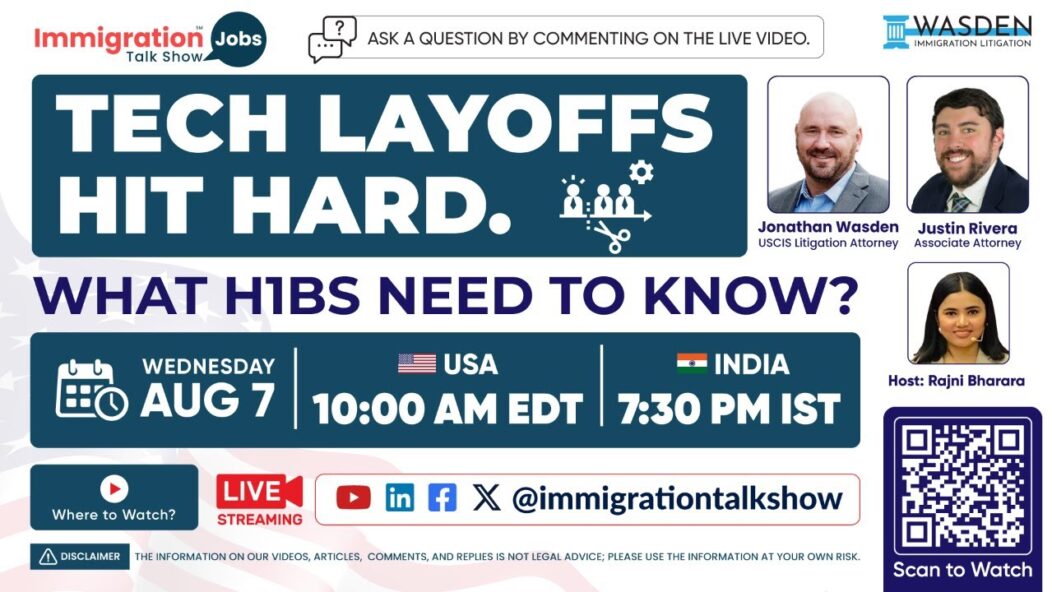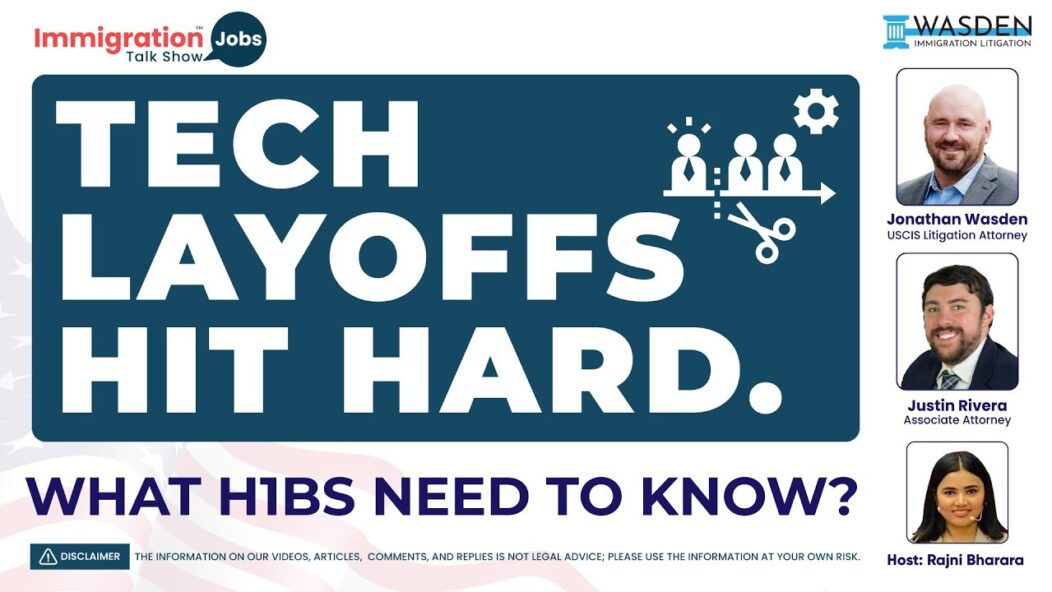The USCIS, responsible for overseeing lawful immigration to the United States, has long relied on a self-funding model primarily through user fees. This article explores whether the agency considered a self-interested profit motive when implementing this practice. We will delve into the historical context, economic justifications, political implications, and consequences for immigrant applicants. Additionally, we will examine legal challenges and offer policy recommendations for the future.
Key Takeaways
- The USCIS has a history of funding itself through user fees, which has significantly shaped its operations and policies.
- Economic theories and fairness perspectives have been used to justify the use of user fees by the USCIS.
- The self-funding model has political implications, including reducing congressional oversight and increasing the agency’s autonomy.
- Immigrant applicants often face high costs, making the immigration process financially challenging for many.
- Legal challenges question whether the USCIS’s motives are self-interested, with significant court rulings impacting its practices.
Historical Context of USCIS’s Self-Funding Scheme
Origins and Evolution
The USCIS’s self-funding scheme began in the late 1980s, during the Reagan administration’s shift towards neoliberal practices. This change set the agency on a path that has greatly affected immigrants’ lives. Initially, the funds were meant only to enhance naturalization and adjudication programs. Over time, however, the reliance on user fees grew, now almost entirely funding the agency’s $4.6 billion annual budget.
Legislative Milestones
In 1989, Congress created the IEFA offsetting account, marking a significant legislative milestone. This account was designed to ensure that funds generated would be used solely for specific immigration services. Despite this, the USCIS’s self-funding model has expanded far beyond its original scope.
Impact on Immigration Policy
The self-funding model has had a profound impact on immigration policy. It has led to a situation where alternative funding methods are rarely considered. This has resulted in a self-reinforcing cycle, making it difficult to imagine other ways to fund the agency. The focus on user fees has also influenced the types of services and the efficiency with which they are provided.
The USCIS’s funding structure is part of a larger trend of power consolidation in the executive branch, affecting not just immigrants but also the broader American public
Economic Justifications for User Fees
Neoclassical Economic Logics
User fees are often justified through neoclassical economic principles. These fees aim to balance the costs and benefits of services provided by the government. By charging for services, the government can manage the consumption of resources, ensuring that only those who truly need and value the service will pay for it. This approach helps in allocating resources efficiently and preventing overuse.
Fairness Perspective
From a fairness standpoint, user fees ensure that the costs of services are borne by those who use them, rather than by the general taxpayer. This method is seen as equitable because it aligns payment with usage. For instance, immigrants who apply for visas or citizenship are directly benefiting from the services provided by USCIS, so it is fair that they should cover the costs.
Managing Perceived Externalities
User fees also help in managing externalities, which are the indirect effects of a service or activity on third parties. By imposing fees, the government can mitigate negative externalities, such as overcrowding or overuse of services. This ensures that the societal costs are considered in the pricing, leading to more responsible consumption of services.
User fees are not just about covering costs; they are a tool for efficient resource allocation and fairness in public service provision
Political Implications of Self-Funding
Displacement of Political Contestation
The self-funding model of the USCIS has shifted the political debate around immigration policies. Instead of being a matter of public policy, decisions are now driven by market dynamics. This change has made it harder for political actors to influence immigration policies, as they are now seen as market outcomes rather than policy choices.
Insulation from Congressional Oversight
By relying on user fees, the USCIS has removed itself from the regular appropriations process. This means that Congress has less control over the agency, making it difficult to hold it accountable. The lack of oversight can lead to decisions that may not align with the broader public interest.
Instrumentalization of the USCIS
The self-funding model has turned the USCIS into an entity that operates more like a business than a government agency. Immigrant applicants are treated as customers, and the focus shifts to revenue generation rather than public service. This shift can lead to policies that prioritize profit over the well-being of immigrants.
The self-funding scheme has created a positive feedback loop, naturalizing the use of user fees and frustrating the political process that could contest its appropriateness.
Consequences for Immigrant Applicants
Treatment as Sovereign Consumers
Immigrant applicants are often treated as sovereign consumers, expected to navigate the complex and costly immigration system on their own. This approach assumes that immigrants can make rational decisions based on price signals, which is not always the case. Many immigrants continue to pay increasing fees despite the financial burden, as they have no other choice.
Cost Prohibitive Measures
The rising fees imposed by the USCIS can be prohibitive for many immigrants, especially those with lower incomes or less education. These fees can make it difficult for them to acquire U.S. citizenship or other immigration benefits. For instance, immigrants with an income below 150% of the poverty level can request a fee waiver, but this is not always granted.
Feedback Loop Effects
The high costs associated with immigration applications create a feedback loop. As fees increase, fewer immigrants can afford to apply, which in turn reduces the overall number of applicants. This can lead to a decrease in the diversity and number of immigrants entering the country, impacting federal immigration policy.
The burden of high fees on immigrant applicants is significant and continues to grow with each new fee hike. The political process must address this issue to ensure a fair and just immigration system
Legal Challenges and Controversies
Case Filed by Jonathan Wasden and Bradley Banias
Jonathan Wasden and Bradley Banias filed a significant case challenging the self-funding model of the USCIS. They argued that the agency’s reliance on user fees created a conflict of interest, potentially prioritizing revenue over fair immigration processes. This case brought to light the potential for self-interested motives within the USCIS.
Arguments Against Self-Interested Motives
Critics argue that the self-funding model incentivizes the USCIS to implement policies that maximize revenue rather than serve the public interest. This could lead to higher fees and more stringent application processes, disproportionately affecting lower-income immigrants. The debate centers on whether the USCIS can remain impartial while being financially self-sufficient.
Court Rulings and Implications
The courts have been divided on this issue. Some rulings have supported the USCIS’s self-funding model, citing its necessity for operational efficiency. Others have called for increased oversight to ensure that financial motives do not compromise the agency’s mission. The legal landscape remains complex, with ongoing debates about the balance between financial independence and ethical responsibility.
The legal challenges against the USCIS’s self-funding model highlight the tension between financial independence and ethical responsibility. These cases underscore the need for a balanced approach that ensures both operational efficiency and fairness in immigration processes
Future Directions and Policy Recommendations
Revisiting the Self-Funding Model
The USCIS’s self-funding model has sparked much debate. Reevaluating this model could lead to more balanced outcomes for all stakeholders. A thorough review might reveal areas where adjustments can be made to better serve both the agency and immigrant applicants.
Enhancing Congressional Oversight
Increasing Congressional oversight could ensure that the USCIS operates more transparently and accountably. This could involve regular audits, public reports, and hearings to keep the agency’s actions in check.
Balancing Economic and Humanitarian Concerns
Striking a balance between economic efficiency and humanitarian needs is crucial. Policies should be designed to not only cover operational costs but also to ensure that they do not become prohibitive for applicants. This balance can be achieved through:
- Sliding scale fees based on income
- Fee waivers for low-income applicants
- Periodic reviews to adjust fees based on economic conditions
Ensuring that the USCIS remains both financially viable and fair to immigrants is a complex but necessary task. By addressing these future directions, we can create a more equitable and effective immigration system.
Looking ahead, it’s clear that immigration policies need to evolve to better serve individuals and businesses. We invite you to explore our website for more insights and detailed recommendations. Your engagement can make a difference!
Conclusion
In conclusion, the USCIS’s approach to funding through user fees raises important questions about the agency’s motives and the broader implications for immigration policy. By operating in a manner similar to a for-profit business, the USCIS has shifted the financial burden onto immigrants and their sponsors, potentially making it more difficult for certain groups to participate in visa programs. This self-funding model has also removed the agency from regular congressional oversight, complicating efforts to ensure accountability. As we consider the fairness and effectiveness of this system, it is crucial to examine whether the primary goal is to cover costs or to create barriers for specific applicants. The answers to these questions will shape the future of immigration policy and the role of the USCIS in administering it.
Frequently Asked Questions
Why did the USCIS start charging user fees?
The USCIS started charging user fees to fund its operations without relying on taxpayer money. This self-funding model helps cover the costs of processing immigration applications.
What are the economic reasons behind USCIS’s user fees?
The economic reasons include making sure those who benefit from the services pay for them. It also helps manage the costs and impacts on the economy.
How do user fees affect immigrant applicants?
User fees can make it more expensive for immigrants to apply for visas and other services. This might discourage some people from applying.
What legal challenges have been made against USCIS’s user fees?
Attorneys Jonathan Wasden and Bradley Banias have filed cases arguing that the fees are unfair and may have self-interested motives. Courts have looked into whether these fees are justified.
How does the self-funding model impact the political process?
The self-funding model means USCIS doesn’t rely on Congress for money. This can reduce political oversight and make it harder for lawmakers to influence immigration policies.
What are some recommendations for future USCIS policies?
Some recommendations include revisiting the self-funding model, increasing Congressional oversight, and balancing economic needs with humanitarian concerns.
Contact Us
For more information or to schedule a consultation, visit our website at Wasden Law, Our experienced litigation attorneys are ready to fight for your rights and ensure your immigration journey is as smooth as possible.
🔍 Have questions or need advice? Drop a comment below! Our team is here to help. 🗣️💬
✉️ Connect with us for personalized guidance and support. Let’s navigate your immigration journey together. 🌐📩
💡 Curious about your specific case? Ask us in the comments and get expert advice tailored to your needs. 🧑⚖️📝
Disclaimer:
The information provided in this article is for general informational purposes only and does not constitute legal advice. While we strive to ensure the content is accurate and up-to-date, it is not a substitute for professional legal consultation. Immigration laws and regulations are subject to change, and their application can vary based on specific circumstances. We recommend scheduling a consultation with us to obtain advice tailored to your individual situation. The authors and publishers of this article are not responsible for any actions taken based on the information provided herein.
How useful was this post?
Click on a star to rate it!









